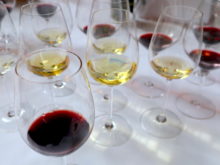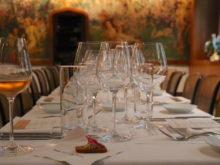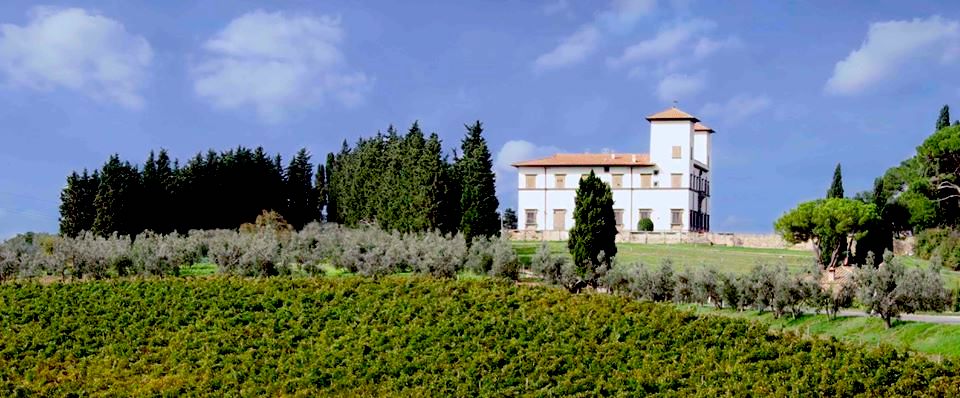
Say what you will about Mr. Hannibal Lecter, but there’s no question that the notorious gourmand knew his wines. There’s a reason Lecter paired his favorite meal with Chianti—rather than, let’s say, a Burgundy. A true oenophile like Lecter knows that the world’s first wine appellation was designated in 1716 in Chianti, Italy by Grand Duke Cosimo III of Tuscany. Subsequently, for more than 300 years, wine lovers have craved Chianti Classico‘s complementary qualities for food pairings—and especially with hearty meats, roasted game, and aged cheeses like Parmigiano.
Situated between Florence and Siena, the Chianti Classico region is heavily forested by oak, chestnut, cypress, and pine, thereby enabling a rich biodiversity in the soil that ranges from sand and marine silts to clay, limestone, schist, and shale. According to Giovanni Manetti, President of Consorzio Vino Chianti Classico, one of the primary goals for Chianti Classico DOCG winemakers is the creation of a “sense of place” in their wines and a desire to “transfer the territory into the bottle.”
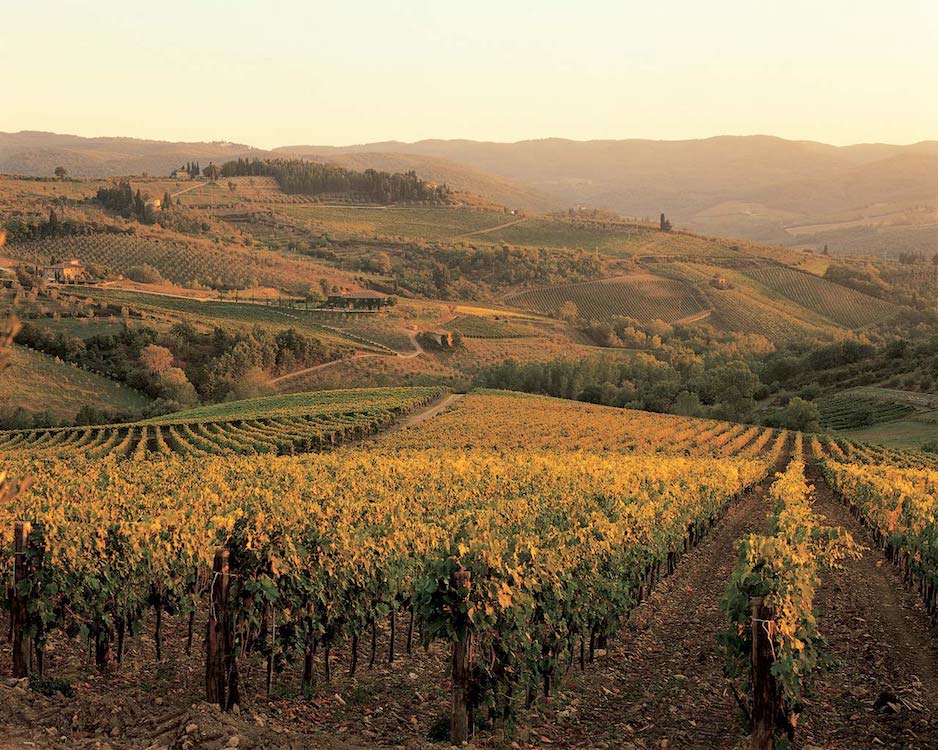
More than 18,000 acres of vineyard are registered as Chianti Classico DOCG, with a broad range of terroir that is beautifully expressed in the wine. As Manetti asserted at a recent tasting in Manhattan, Chianti Classico cannot be replicated and, instead, stands unique and incomparable.
Although the region is three hundred years old, Chianti Classico is equally modern with a focus on low yield, which, in the words of Manetti, means “a sign of sacrifice to ensure higher quality, authenticity, and territoriality.” In recent years, the region has focused on increased sustainability—and the result is an annual yield of more than 35 million bottles, more than 40% of which is organic. As well, one third of the Chianti Classico estates utilize alternative sources of energy.
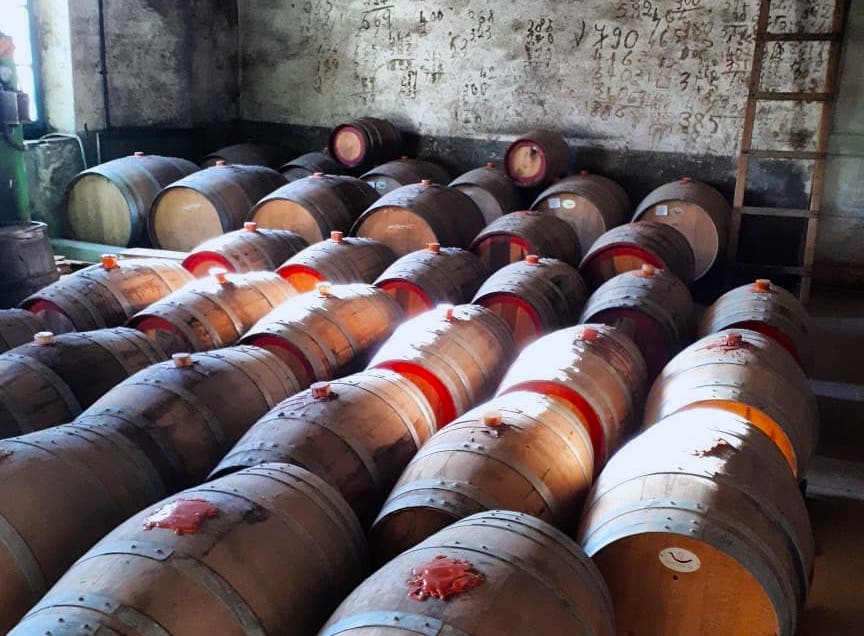
While there is a generalized confusion between Chianti wines and Chianti Classico wines, Chianti Classico is a separate DOCG in the heart of Chianti in Tuscany. A Chianti Classico must be at least 80% Sangiovese with a minimum of 12 months aging. In 2013, the Consorzio Vino Chianti Classico reconfigured its Gallo Nero quality pyramid, which introduced Gran Selezione as the premium wine atop the pyramid. Wines certified as Gran Selezione must have a minimum alcohol content of 13% and no less than 30 months aging with at least three months in bottle. The result is a fruit-forward and spice-flecked wine with excellent structure and balanced tannins that offers great aging potential.
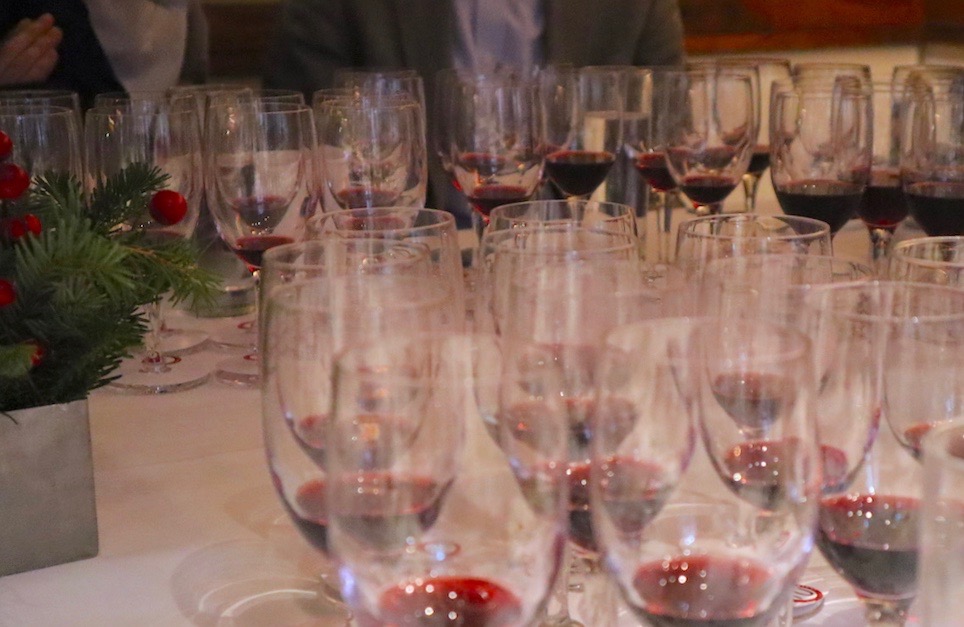
A recent tasting and lunch at The Leopard at Des Artistes on Manhattan’s Upper West Side showcased the breadth of diversity of Chianti Classico DOCG Gran Selezione by focusing on a single vintage. Twelve Gran Selezione wines from 2016 were paired with a four-course tasting menu and followed by a surprise guest from 2006: Isole e Olena Chianti Classico DOCG Isole e Olena Gran Selezione—about which nothing more need be said except that we should all be so lucky as to wake on Christmas morning and find a magnum of this beauty awaiting us under the tree.
Amidst such bounty, it feels somewhat reductive to choose favorites—and especially because every one of the twelve bottles merits its own languorous meal and the opportunity to reveal its prowess.
Nonetheless, here are several wines that spoke with particular eloquence and linger still in the memory.
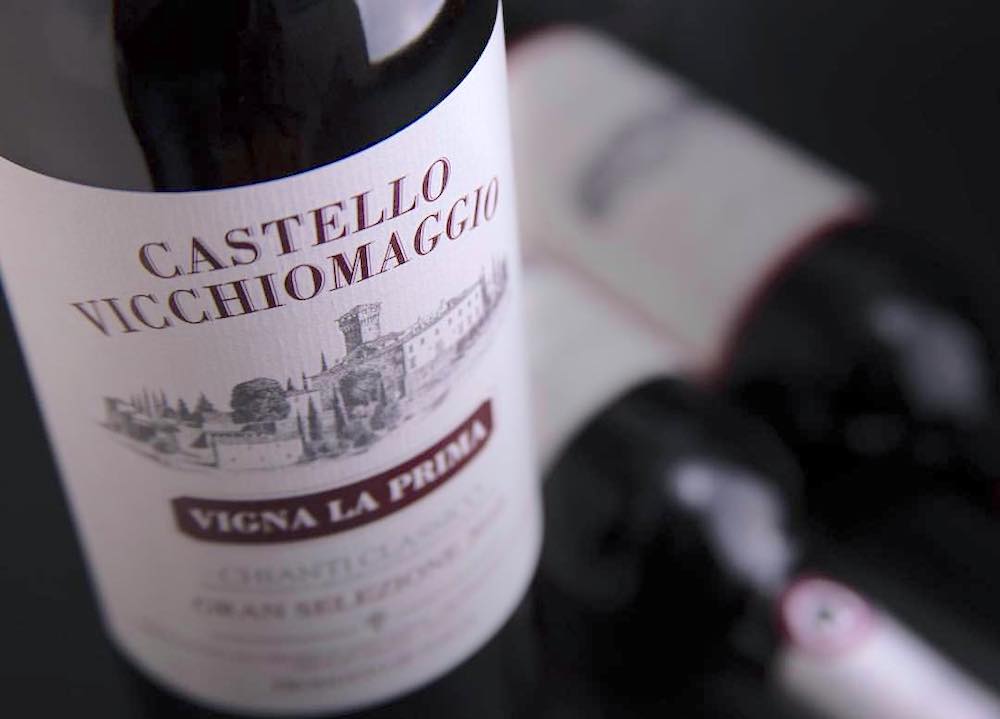
Castello Vicchiomaggio Chianti Classico DOCG La Prima Gran Selezione 2016: Situated atop a hill overlooking the Greve valley in Chianti, the 12th-century Castello Vicchiomaggio has an illustrious history with a guest register that includes Leonardo da Vinci. The surrounding 345-acre estate encompasses 84 acres of vineyard planted with Sangiovese, Canaiolo, and Colorino, as well as two international varieties: Merlot and Cabernet Sauvignon.
Harvested by hand from soil rich in clay and then aged for 18 months in new French oak, Castello Vicchiomaggio Chianti Classico DOCG La Prima Gran Selezione 2016 shimmers ruby red in the glass with notes of blackberry and ripe cherry on the nose. The winery’s signature elegance is readily apparent with a breathtaking restraint and balance: nothing so forward or pushy here in this 90% Sangiovese (with 10% Merlot), but instead, the beauty of a graceful entrance marked by teasing tannins and a supple structure. La Prima, indeed. The lingering finish hovers like a promise: come see about me. There’s great aging potential here, if you can resist the temptation of now.
For generations, Castello Vicchiomaggio has been producing stellar wine and La Prima is a testament to the estate’s impeccable quality.
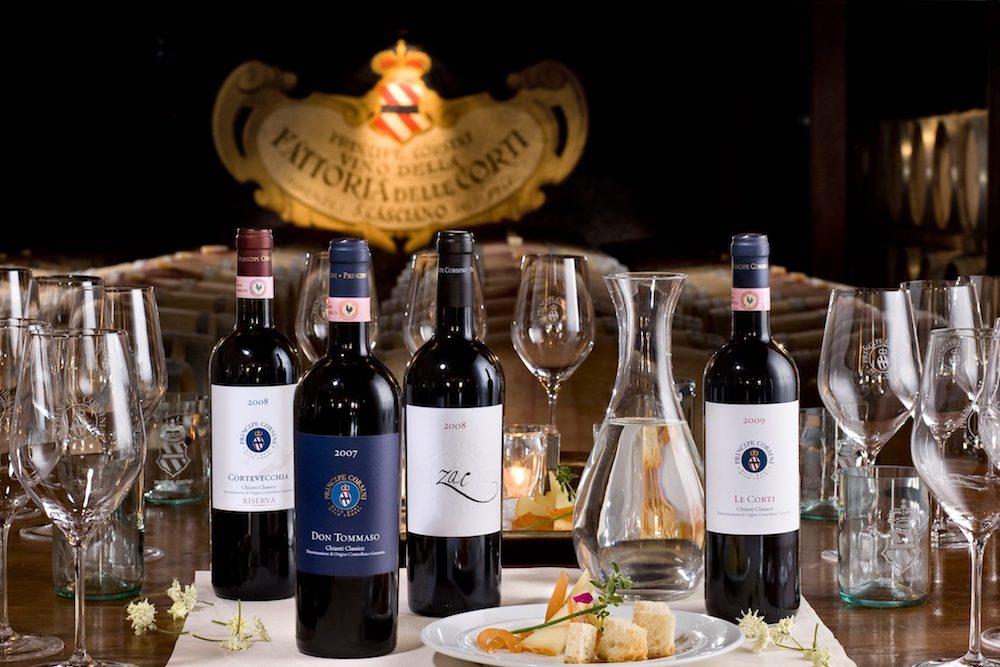
Principe Corsini Chianti Classico DOCG Zac Gran Selezione 2016: For more than nine centuries, the Corsini family has been a venerable player in Italian history with a distinguished lineage that includes merchants, bankers, politicians, and theologians.
At Villa le Corti, the family’s historic 600-acre estate in Chianti, the wine cellar dates to the 15th century. More than 120 acres of vineyards are planted with Sangiovese to produce the wines of Chianti Classico Principe Corsini, including Zac, a 100% Sangiovese wine from a six-acre plot located 300 meters above sea level. First produced in 2008, Zac is dedicated to Anna Corsini, known by her family as Zac.
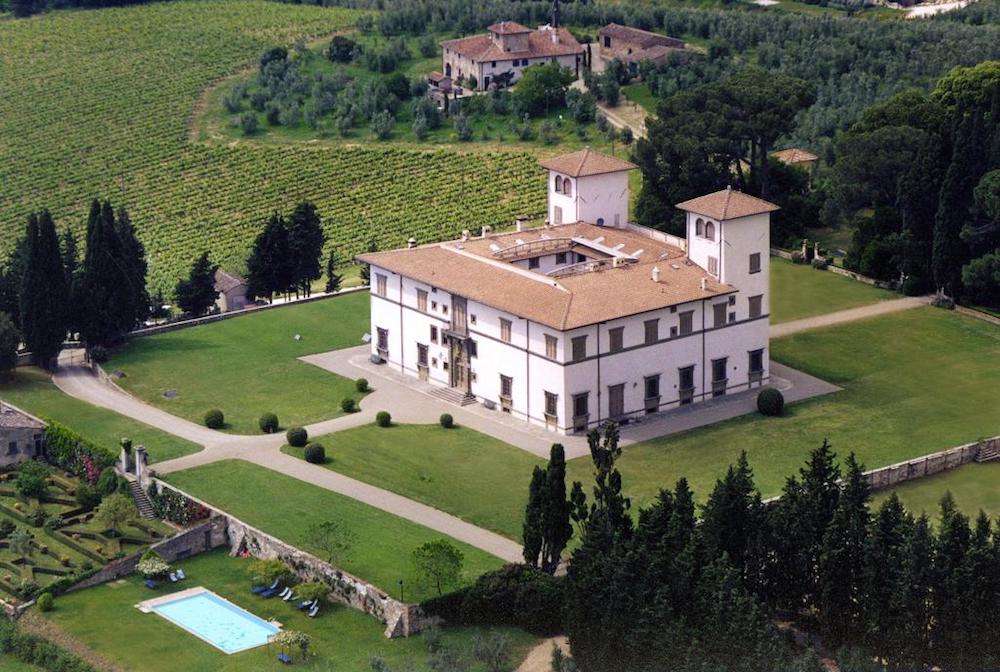
With the glint of garnet in the glass, Principe Corsini Chianti Classico DOCG Zac Gran Selezione 2016 offers a bountiful bouquet with mineral and floral notes complemented by the ripeness of black cherry and blackberry. That’s a lot going on—and yet, it’s integrated smoothly: an example of ikebana in the glass, everything placed correctly. Aged in French oak, half of which are new, the wine rests for 18 months in bottle. A sumptuous mouth of vibrant acidity and impressive fruit complements the voluptuous body and taut structure.
This is a Yuletide pleaser, a celebratory wine made for game and fowl—and yet, probably equally delicious with simply a pizza.
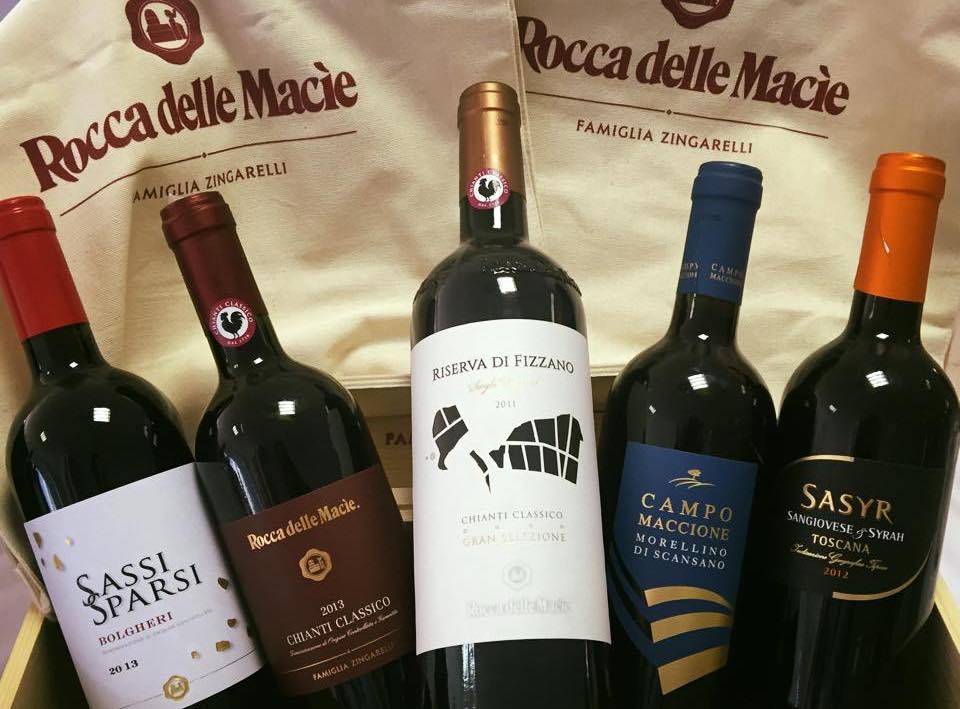
Rocca delle Macie Chianti Classico DOCG Riserva di Fizzano Gran Selezione 2016: Established in 1973 by film producer Italo Zingarelli, Rocca delle Macie is the culmination of Zingarelli’s lifelong dream to acquire the Castellina estate known as Le Macie in Chianti. Today, the estate encompasses more than 1,000 acres with 500 acres dedicated as vineyards.
The vineyard’s philosophy is a commitment to produce wines with territorial character and coherence. Utilizing grapes harvested from the Fizzano estate, Rocca delle Macie Chianti Classico DOCG Riserva di Fizzano Gran Selezione 2016 beautifully expresses the terroir of the 150-acre borgo that dates to the 11th century. Bright ruby-red in color, Riserva di Fizzano is 90% Sangiovese and 10% Colorino, with an alcohol content of 14.5%. On the nose are ripe wild berries and a rustic garrigue with a hint of vanilla spice—after which, in the mouth, there’s juicy plum and red fruit with an earthy depth.
Aged in French oak for two years and another year in the bottle, Rocca delle Macie Chianti Classico DOCG Riserva di Fizzano Gran Selezione 2016 beautifully expresses the classic character and signature elegance of Chianti Classico.
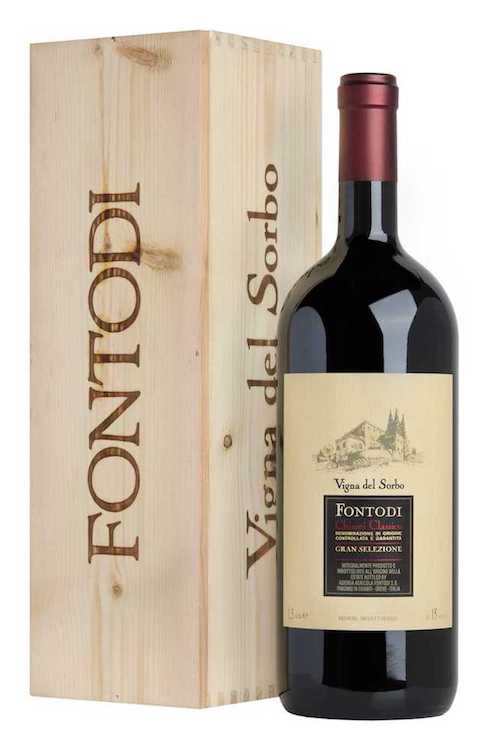
Fontodi Chianti Classico DOCG Vigna del Sorbo Gran Selezione 2016: Perhaps there was a reason that this seductive beauty was the penultimate pour—for this 100% Sangiovese proved irresistible to those other guests in my vicinity. For one thing, Fontodi is a certified organic estate with more than 170 acres of vineyards. Secondly, there are the 40-year-old vines from the Vigna del Sorbo vineyards. Finally, the maturation on Fontodi Chianti Classico DOCG Vigna del Sorbo Gran Selezione 2016 comprises 18 months in French oak barrels, 6 months in French oak casks, followed by a minimum of six months in bottle six months before release. The anticipation is merited.
Aromatic on the nose, this nimble wine reveals a bountiful bouquet marked by violets and lavender lightly touched in licorice. Ripe raspberries in the mouth merge with vanilla and black currant. There’s intensity here underscored by elegance: you sense the exuberance held in perfect equipoise. A lovely lingering finish leaves you desirous of more—and therein lies the allure of Chianti Classico.


